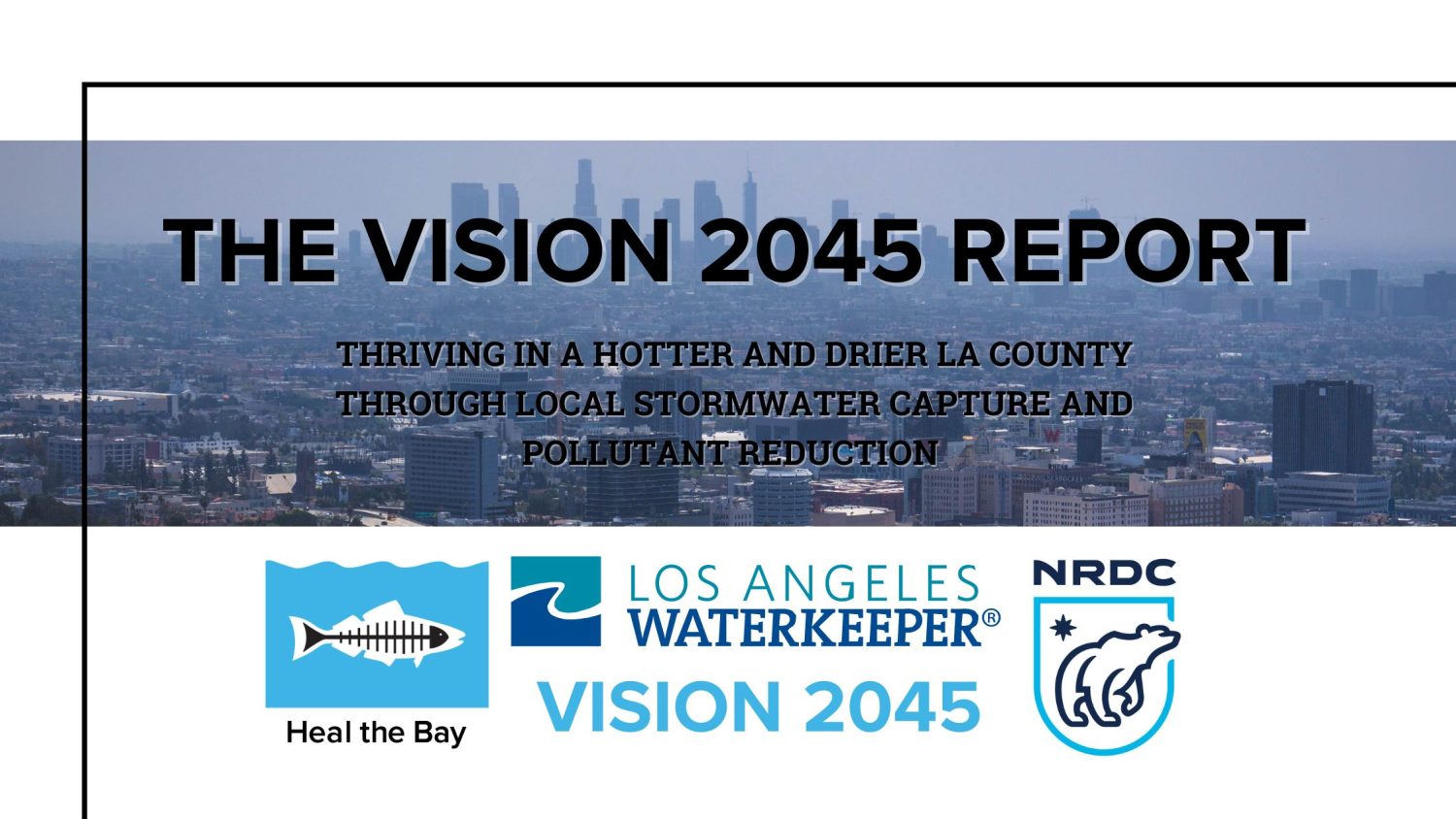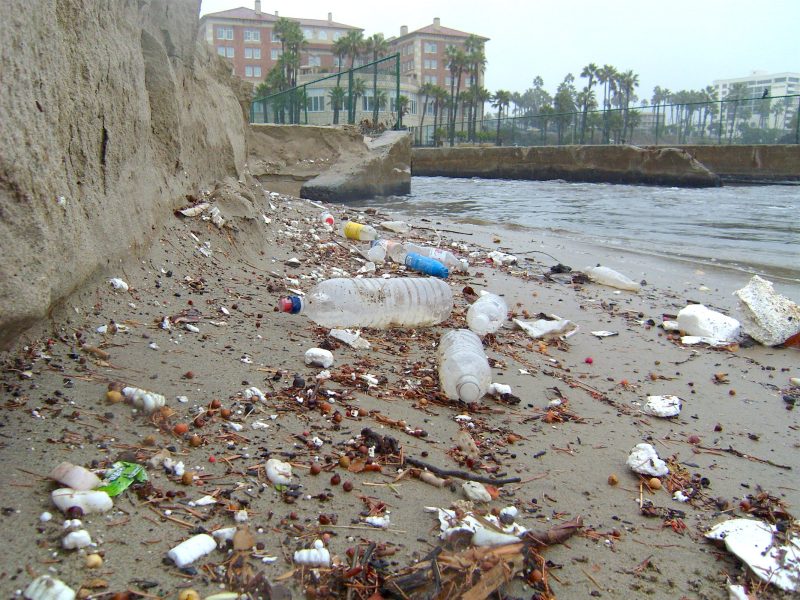Heal the Bay, NRDC and LA Waterkeeper Have A “Vision” for the Safe, Clean Water Program

Heal the Bay, Natural Resources Defense Council (NRDC), and Los Angeles Waterkeeper have worked together to develop a “Vision 2045” report with bolder goals and recommendations for the County’s Safe, Clean Water Program.
 Ladera Park is one of many successful greening projects funded by the Safe, Clean Water Program, but Los Angeles needs more stormwater projects to prepare our region for its future water needs. (Photo by Heal the Bay)
Ladera Park is one of many successful greening projects funded by the Safe, Clean Water Program, but Los Angeles needs more stormwater projects to prepare our region for its future water needs. (Photo by Heal the Bay)
In 2018, Los Angeles County residents passed a landmark funding measure (Measure W), which imposed a parcel tax on impervious surfaces to fund stormwater projects to increase local water supply, improve water quality, and provide community benefits through the Safe, Clean Water Program (SCWP). With an annual budget of approximately $280 million, the SCWP has the potential to transform how Los Angeles County manages stormwater, prioritizing climate resilience and community health and well-being.
The SCWP is currently undergoing its first official assessment through the County’s Biennial Review process, offering an opportunity to assess progress, reflect on the achievement of goals, set targets, and make recommendations. Numerous water quality deadlines have passed in an environment that is becoming hotter and less hospitable and frontline communities are bearing the brunt of those impacts. Therefore, despite numerous successes in its first four years, it has become evident that to meet future ambitions, a clear and realistic roadmap is required. It is now clear that the SCWP must be even bolder in its goals, targets, and timelines to accelerate the equitable transformation of LA County to greener, more local water self-sufficient and climate-prepared communities.

That is why Heal the Bay, along with our partners at Natural Resources Defense Council and LA Waterkeeper, representing three of the LA region’s leading water advocacy organizations, shared a new report with LA County decision-makers tasked with overseeing the ambitious SCWP.
Vision 2045: Thriving in a Hotter and Drier LA County through Local Stormwater Capture and Pollutant Reduction includes bolder goals, targets, and recommendations for the SCWP on water supply, water quality, equity, science, finance, and policy. The report is intended to catalyze County efforts to ensure the Safe, Clean Water Program reaches its goals more quickly and definitively. The timing of the release of this document corresponds with the December 7th meeting of the Regional Oversight Committee on the Biennial Review as well as this week’s LA County Board of Supervisors approval of the LA County Water Plan that builds on their goal of 80% local water supplies by 2045.
Make The Most of Every Drop of Rain
With climate change accelerating, one of the most cost-effective ways to ensure Angelenos will continue to have the water they need to thrive in the decades to come is to make the most of every drop of rain that falls. The groups that drafted this vision document note there is a real urgency to ensure the Safe, Clean Water Program is implemented in a way that is both effective and equitable. Among other goals, it calls for a target of an additional 300,000 acre-feet of stormwater to be captured and put to use every year by 2045. The document also calls on the county to aggressively reduce water pollution by complying with state deadlines, and ensure that at least 10% of projects in disadvantaged communities that are funded through the program are led by community-based organizations, to ensure robust community involvement.
Nature-Based Solutions
The vision document also proposes a target of replacing 12,000 acres of impermeable surfaces with new green space by 2045: a nature-based solution that provides recreation, open space, public health benefits, and more. It calls for all schools located within the boundaries of state-defined disadvantaged communities to become green schools by 2030, with all LA County schools meeting that target no later than 2045. Vision 2045 also sets a target of developing an outreach plan to actively engage local tribes in program implementation by the end of next year.
Yes, 2045 is more than twenty years in the future and unforeseeable changes are ahead economically, environmentally, and politically (for better or worse). Most policymakers and groups working on the program will have moved on and so the way to stay on target is to set realistic (but bold) milestones goals, targets, and timelines to stay on track and achieve safe, clean, water for all.
See our top-level goals, and additional recommendations in the full report.
Read the full Vision 2045 Report
READ THE VISION 2045 PRESS RELEASE
DOWNLOAD THE VISION 2045 REPORT



